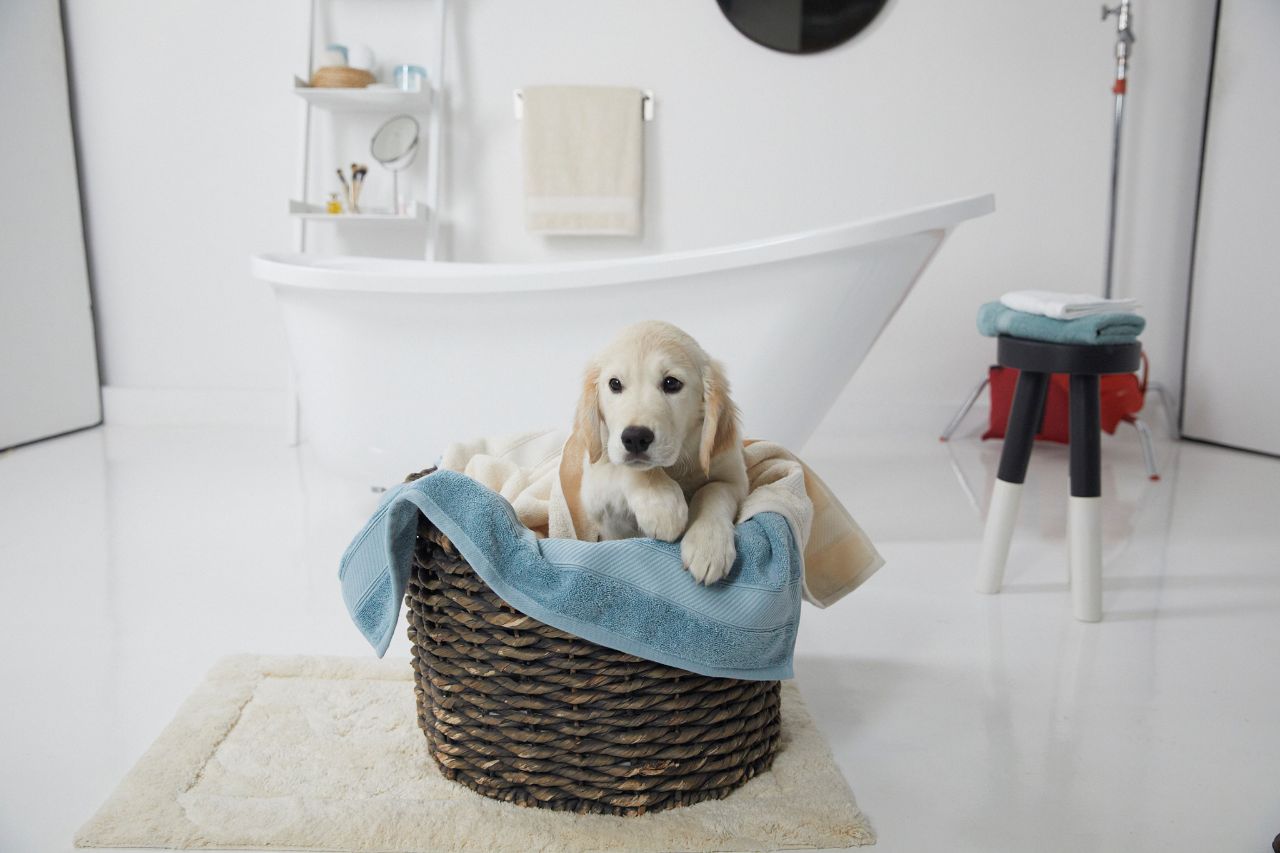Hygge, the Danish concept of cozy contentment, has no direct English translation, but its essence goes well beyond language barriers. Since 2016 when it arrived on the U.S. scene in a big way, hygge has been the cool exchange student we all want to befriend. Hygge often begins in or revolves around the comfort of being in safe spaces, like at home. That's why looking at how to make your home a hygge haven is a great place to start with this import.
What Exactly is Hygge?
Hygge is a Danish cultural concept that has no direct word or phrase in English. When we do translate it, we simplify it to mean something like cozy happiness. According to the Ministry of Foreign Affairs of Denmark, hygge is unstructured, informal time with friends and family that helps you unwind in a relaxed way.
Others describe hygge as a state of being safe, comfortable, connected, appreciative, and appreciated. Hygge is often thought to be a big part of why Danes hover at the top of the World Happiness Report year after year. While hygge is now firmly a Danish concept, it just as likely originated in Norway, where it is also called hygge and sometimes kos - not too far from cozy. The concept is not foreign to other Nordic countries either. Finland, Sweden, and Iceland each have their own cultural concept of hygge, it's just known as other names.
What is Hygge Decor?
Hygge decor is like Scandinavian design, but with an extra splash of cozy personality thrown in for good measure. A hygge home includes various layers, textures, simple lines, and clean, uncluttered spaces. A house with hygge is ripe for sipping perfect-temperature tea, a lingering candlelit dinner with friends, a nook (called a hyggekrog) in which to escape to a literary land, or whatever it is that makes you happy.
But how exactly do you grab a bit of the hygge style for your own space? Like a true Scandinavian, let nature inspire you — both mother nature and human nature. In this guide to hygge decor, we look at what hygge is, how it translates to home decor, and tips to add the perfect hygge vibe to your space.
The Heart of Hygge: Bringing Nature In
In the Nordic countries, nature is a sacred space. It is a way to recharge, be quiet, appreciate the gifts of the forests (cloudberries and chanterelles anyone?), and to tap into a sense of well-being throughout all seasons. It’s not a mystery, then, why Scandinavian design borrows inspiration from the natural world.
Functionality, clean lines, natural materials, varying textures, sentimental and well-worn heirlooms, light and airy moments all work together to create calm, peaceful and homey spaces that set the stage for your life.
Nordic people also show an ingrained commitment to sustainability, using renewable resources, and purchasing high-quality and handmade goods, especially when it comes to home goods. This approach to furnishing their lives is likely in direct relation to their love of nature.
3 Concepts for Maximum Hygge Power
If you can apply these three bigger key concepts, you’re on your way to a hygge-fied household.
-
Keep it Natural - Natural materials are the simplest way to bring the gifts of nature inside your home. Solid, well-crafted wood furniture, hand-planked floor boards, paintings reminiscent of sea and sky, crisp cotton sheets — even something a little funkier like well-chosen birch branches in place of curtain rods — all of these help bring inside spaces to life. One key to hygge decor is layers of soft fabrics. For example, organic sheets that get softer with each wash (LINK to WELSPUN PRODUCT) or a faux fur blanket and squishy throw pillows can help take the visual edges off of hard-edged furniture and furnishings. Keeping it natural also means keeping things tidy and relatively clutter-free, but not everything has to be hidden away.
-
Keep it Neutral - With nature as your guide, keeping your home’s color scheme neutral makes sense. It also makes scientific sense. As humans, we fin Soft colors like grays, muted blues and greens, and off-whites can help keep things light even on the longest of nights. The most calming colors are found That said, hygge is all about comfort, so if you find a hunter green wall brings you cozy contentment, have at it. Large windows, skylights and natural sources of light like candle or fireplace flames are also good ways to keep your home balanced and neutral.
-
Keep it Human - Okay, so this is really a two-for-one, but they are related:- Make your home comfortable for you, your family, and for your friends when they spend time there. Often images of perfect hygge spaces on Instragram or other media might look pretty, but would they function in the real world? Or, better yet, would they function in your world? Take inspiration from them, but make sure it works for you. Hygge is all about creating an atmosphere that fosters good feelings, but the heart of Scandinavian design, functionality, shouldn’t be lost.- Keep humans front and center, not technology. A recently published study added to a growing body of research that demonstrates a negative correlation between screen time and happiness: i.e., the more time spent with a screen, the less happy one feels. To dig into the heart of hygge, create spaces that don’t include screens, whether that’s t.v., computer, tablet, or phone. If you have a corner that you can carve out a reading nook or conversation area, create one! Hygge is all about being in the moment and connecting with what is in front of you. If you use your living room as a t.v. area and that’s part of your personal hygge, consider adding a screen or another clever way of hiding it in plain sight when it's not in use.
Tips to Add Hygge to Every Room of Your Home
Whether you live in an apartment, a condo, a tiny home, or a sprawling colonial, converting your space into a hygge haven can be done! These "do" and "don’t" tips provide specific things you can do to make your space more cozy and hygge-optimized.
Living Room
If you’re in a renovating mood with some budget to spare, considering adding skylights, additional windows or taking down walls (non-load bearing of course) to open up your space and take advantage of natural light. On that same note, replacing carpet and laminate flooring with reclaimed wood planks is about as hygge as you can get. A major reno not on the agenda? That’s okay, here are some less intensive but still very hygge things to do:
-
If you have wood floors or tile add some natural fiber rugs to help keep the space warm and connected. Wool and silk work well.
-
If you live in an apartment, you likely don’t have much control over the basic building blocks of your rooms, like carpet, colors, etc. However, you can still bring in elements of hygge style, like layering and texture. It might seem odd to layer a rug over carpeting, but it can be done and done well.
-
Instead of just having your seating arrangement aligned with the T.V., rearrange your furniture to prioritize conversation areas.
-
Throw pillows in different shapes and size, with natural covers are great ways to bring hygge into your home. Think about how they coordinate and layer together, but try not to get too match-y. Relaxed is key.
-
Comfy throws of cotton, wool and faux fur are a must.
-
Incorporate candles and soft lighting where possible.
-
When adding curtains or drapes, layer those too! Double curtain rods let you hang and overlap multiple panels for a richer look. Or add sheers to fill in the spaces between panels to allow more light to stream in while maintaining privacy.
Dining Room
Again, layering with natural fabrics can take a regular table to the next level in one move.
-
We’re not talking fancy, formal napkins and placemats here, but softer textures go a long way. Perhaps you have a tablecloth someone embroidered or crocheted that will look lovely at the center of the spread.
-
Work in flowers, twigs, petals, pinecones, or other symbols of nature. For example, a handful of pine cones in the center of the table or edible flowers pressed into table butter are simple, but wonderful additions.
Kitchen
Kitchens tend to be a little less cozy when it comes to necessary components, but they are often the heart of the home, so they have a natural talent for creating hygge feelings.
-
Soften the space with fabric, when possible. Add some curtain panels or mix in natural wood blinds to keep a visual warmth.
-
Add textiles like tea cozies and hand towels.
-
Decorate with nicely framed old recipes, collections and heirlooms where it makes sense.
-
Keep counters uncluttered.

Bathroom
Like kitchens, bathrooms can be hard spaces with cold tiles and uninspiring walls. But they don’t have to be! Hygge can help warm them up.
-
Incorporate different textures with natural wood, ceramic, plants, and fluffy, indulgent towels.
-
Rugs and shower curtains can also help round out the texture of the room. If you are renting and can’t change the wall colors or tiles, these are your best bets to soften the room.
-
Consider towel hooks (temporary or permanent) or cabinet pulls in natural stone or lovely ceramic instead of the basic metal ones.

Bedroom
Like the living room, if you can work in hardwood floors and muted paint colors, go for it. If you are more limited in what you can do, it’s all about the bed.
-
Make sure your sheets, blankets and other linens are natural fiber, made of top quality.
-
Embrace your inner Scandinavian and seek out sustainable and environmentally friendly fabrics. Look for the OEKO-TEX seal of approval for an even more hygge feeling, knowing you’re doing good for the environment and textile workers.
-
Layer up your bedding. When you look at catalogues or other images of inviting beds, it’s likely that they have used several blankets or comforters and a stack of pillows to create something that is both extravagant and completely hygge.
-
Scandinavians use separate duvets or comforters when sleeping with a partner.
-
Like clothes, fit can make all the difference. When you’re selecting your bed linens, make sure they will fit correctly and that when they are in place, they will stay in place.

If you’re looking for an easy way to embrace the warmth and comfort of a hygge life, Welspun has you covered. The important thing to remember when bringing hygge into your home is to make sure it works for you, and that your everyday moments are as special as they can be.

